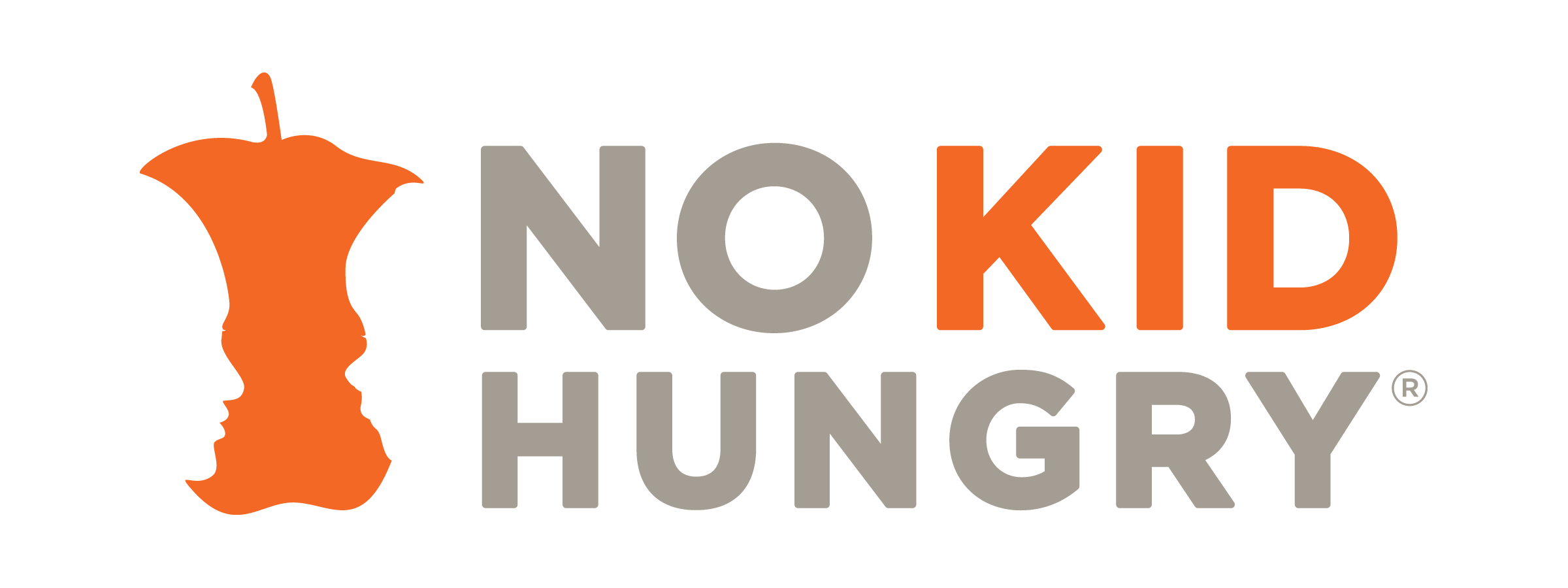
#NationalSchoolBreakfastWeek may be over, but at No Kid Hungry Ohio we’re thinking about the importance of school breakfast 365 days a year.
When kids eat breakfast, their days run smoother. Research shows that kids who eat school breakfast score higher on standardized tests, take fewer trips to the nurse, and have higher attendance and graduation rates. School breakfast is a win for families too and can help lighten the load during busy weekday mornings. The benefits of school breakfast are compounding and have the ability to affect children now and their futures. For additional information and the research behind these facts, click here.
However, across the country, school breakfast is not reaching all the children who need it. Students’ access to breakfast is impacted by so many barriers, including transportation, busy mornings, stigma, and more. One strategy to work around these barriers and make sure students receive breakfast is Breakfast After the Bell. Whether you’re just beginning to explore Breakfast After the Bell or have run your program for years, we have resources and support to make your program as successful as possible.
Just Starting Out
Innovative Breakfast Delivery Options
Learn how each Breakfast After the Bell model is structured and the higher breakfast participation rates associated with each model
Gaining Buy-In
The study found that Breakfast After the Bell programs can help reduce chronic absenteeism and improve other student outcomes like test scores and social-emotional development.
Educator’s Guide to School Breakfast Funding
This resource traces the path of the funding that supports school breakfast and lunch from Congress to the cafeteria. It also answers common questions that educators have about how the programs work.
Breakfast After the Bell Myths
Learn about Breakfast After the Bell myths and the facts that disprove them with this resource.
Letter to School Staff Template
This letter is designed to engage school staff and provide detailed information about how a Breakfast After the Bell program would operate.
Breakfast FAQs for Parents – English
This customizable resource answers those frequently asked questions that School Nutrition Directors and Principals get from parents regarding Breakfast After the Bell. The resource is also available in Spanish.
Second Chance Breakfast Customizable Letter to Families
This template letter can be customized by schools to inform families about a Breakfast After the Bell program.
Building Partnerships and Stakeholder Support
School Meals: Valuable to Kids, Schools & Communities
Learn about how school meals are essential to student health and academic success, and how supporting school meals means supporting the local economy.
Building & Maintaining Relationships with Your State Agency – A Guide for Program Sponsors
This resource shares strategies and tips for program sponsors looking to build, improve, and maintain their relationships with state agencies.
A Guide for Building Relationships with School Nutrition Staff
This resource is intended to guide you in deciding when to approach school nutrition staff and which members of the staff to approach.
Talking Points for Introducing BAB to School Stakeholders
These talking points can help you get started as you plan to introduce school stakeholders to Breakfast After the Bell.
This link to our website will lead you to more resources on engaging stakeholders.
Outreach and Promotion
School Breakfast Promotion Strategies
This resource highlights promotion strategies to build awareness, generate excitement, and increase school breakfast participation.
School Meals Application Outreach Toolkit
This toolkit is designed to help districts get the word out to families about why completing and submitting free and reduced-price meal applications is important. The toolkit includes guidance about connecting with families, outreach examples from other school districts, and ready-to-use and customizable resources that are available in both English and Spanish. The contents of this toolkit can also be adopted for outreach for the completion and submission of alternative income forms.
Help promote your school’s breakfast program with these customizable posters.
Logistics
Teacher Guide to Classroom Set Up & Clean Up
This resource outlines promising practices on how to create a plan for classroom setup and clean up where breakfast is served or eaten.
Strategies to Reduce Food Waste in Schools and Child Nutrition Programs
This resource highlights some of the most effective strategies to help reduce, recover, and recycle food waste from school meals.
Breakfast in the Classroom Pacing Guide for Educators
This resource offers steps educators can take to support a successful launch of Breakfast in the Classroom. You will also find detailed activity ideas for educators and supportive resources.
Increasing Participation
Strategies for Finding Success With CEP
The Community Eligibility Provision (CEP) enables eligible schools to serve free meals to all students, regardless of income. This resource explores strategies like improving meal participation rates, increasing the Identified Student Percentage (ISP), and generating revenue with savvy business practices.
Conversation Starters for Designing More Inclusive School Meals Programs
This resource can help increase participation by Identifying access barriers and developing strategies for partnering with students and families to eliminate those barriers.
Planning with Purpose – An Equity Diversity & Inclusion Checklist
This resource covers actionable steps that can be implemented to plan high-quality events that meet the needs of all. This checklist is not an exhaustive list and can be customized for your training, webinar, or other events.
Visit our School Meals Design Guide website to access tools that school food and nutrition teams can use to make meal programs more student-centered.
Maintaining the Momentum: Launching & Sustaining Successful Breakfast After the Bell Programs
Watch this webinar to learn about BAB, how you can launch a successful program, and expand and/or sustain your own BAB program. The three speakers showcasing their BAB programs represent districts of varying sizes and geographies to demonstrate how BAB can be successfully adapted to meet the individual needs of a district and its schools.
Strategies for Increasing Breakfast Participation at Middle and High Schools
Middle and high schools typically have lower breakfast participation than elementary schools. Middle and high school students have unique needs; therefore, the breakfast program should be adapted accordingly in order to gain buy-in from students and increase breakfast participation.
You can find even more resources for school breakfast – as well as other programs – at the No Kid Hungry Center for Best Practices website. No Kid Hungry Ohio is committed to supporting school nutrition professionals and making sure that you have the resources you need to help your students thrive. Looking for more information, 1:1 technical assistance, or grant opportunities? Reach out to our team through our inquiry form.

